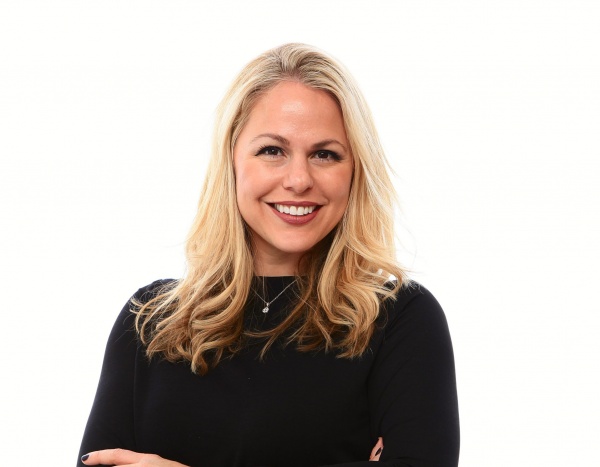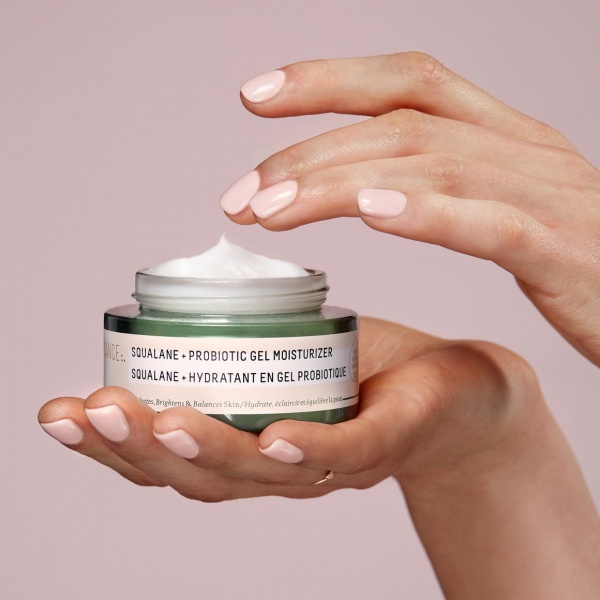
Catherine Gore, President of clean beauty brand, Biossance
- Beauty
Catherine Gore; a clean beauty trailblazer
Meet the woman challenging the way the world approaches beauty
By Erica Watson
No one knows the beauty industry quite like Catherine Gore. She’s honed her skills over the past 20-odd years with household names like Sephora, LVMH and Marc Jacobs, but it’s her work as President of biotech beauty brand, Biossance that has seen the trailblazer’s star truly rise.
Passionate, knowledgeable and refreshingly genuine, when we discuss the effectiveness of clean and natural beauty products, Catherine is passionate about their place in the beauty industry. At the helm of Biossance, she is on a mission to create clarity around a predominantly unregulated industry. For her, the company provides its customers with the holy grail; a skincare option that’s not only better for the environment, it’s healthier for them, and most importantly, delivers measurable results.
Founded just four years ago by biotech company Amyris, the brand sits at the intersection of both the beauty and tech worlds, using science and planet-first solutions to create its cult plant-derived clean beauty products. To date, it has blacklisted more than 2000 toxic ingredients, revolutionised safe synthetics, and its DNA is built on ethics and sustainability. It could be said that the luxury skincare brand isn’t just disrupting the industry, it’s changing the game altogether.
“We don’t ever make decisions based on whether we think we’ll get the right marketing credit for it or whether we think it’ll make a little splash, we make decisions based on very large impacts,” says Catherine. “It takes longer and it’s harder, but it is absolutely the right thing to do.”
Already a favourite amongst celebrities – the brand just announced a five-year ambassador deal with actress Reese Witherspoon – Catherine and her team are focused first and foremost on delivering science-led solutions to all our beauty woes, minus the toxins and the fillers.
“A lot of the most active ingredients that we see in the industry, whether it’s lactic acid or Vitamin C, are clean. The most beloved ingredients that are out there are already clean. It’s about removing those dozens of filler products that weren’t needed anyway and using better complimentary ingredients,” Catherine says.
“In doing so, you create a system that gives consumers what they want, which is results and products without harming the planet.”

Squalane + probiotic gel moisturiser
CLEAN SYNTHETICS
Creating a synthetic alternative to squalane – Biossance’s hero ingredient – is one example of how the company is innovating for the greater good. Derived from shark livers, squalane has long been used in the cosmetics industry for its antioxidants and hydrating properties as well as its ability to mimic our skin’s natural oils. Biossance has created a safe synthetic version of the oil using fermented sugar cane, and in the process saves over two million sharks each year.
“We can make it higher quality, actually more efficacious, less expensive, more weightless and clearer, than its shark counterpart,” Catherine says. “So it’s not just to replicate it, but actually make it better.”
For Catherine and the 250-strong team of scientists, clean synthetics inspired by nature is what drives the brand. They are accredited by ingredient watchdog, The Environmental Working Group (EWG), and one of the only EWG recognised brands stocked by mainstream retailer, Sephora.
“Most products can be five ingredients or less just for maximum efficacy. And we test that theory a lot,” she says. “There should be no hesitation in terms of clean synthetics. It’s not actually synthetic it’s actually authentic.’’

Biossance has created synthetic squalane from sugarcane, saving two million sharks a year
THINKING OUTSIDE THE BOX
With the beauty industry alone responsible for producing billions of plastic packaging each year, creating a more environmentally friendly packaging solution was something that Biossance fought hard for. Its products come in both glass containers as well as plant-derived plastics. Outer packaging is made from the sugarcane bi-products and are biodegradable. Catherine believes that sampling in the industry has much to answer for when it comes to plastic pollution.
“There’s about ten times more samples than there are full-sized products and most municipalities don’t recycle them because they’re too small. I really think if we put our attention to the places that will truly matter, I think we could make a great impact,” she says. Biossance has also committed to zero-waste by 2025, a goal that Catherine says they have almost reached already.
“We’re actually almost there right now. We use the sugar cane stock from the fields and create the boxes and we have committed to identifying manufacturers that have sustainable processes. We use all sustainable ingredients and then we have most of our products in glass. The rest were either moving to glass or PCR, (post-consumer resin plastic)” she says.
SAGE ADVICE
For Catherine, sustainability isn’t just a part of her 9-5 life, it’s also woven into the fabric of her home. “It’s become even more important now that I have two kids,” Catherine says. “My goal is to make my future grandkids proud that I made the right choices. California is a little bit ahead of the curve in terms of sustainability. We don’t use single-use plastics.”
And her advice for others is simple; “pick the area that you think you can make the biggest impact,” she says. “Start with the right intentions, do the research and then make small changes that lead to big changes.”
Related; Why sustainable underwear is our new normal
Related; How Sam Elsom is changing the world one seaweed plant at a time
